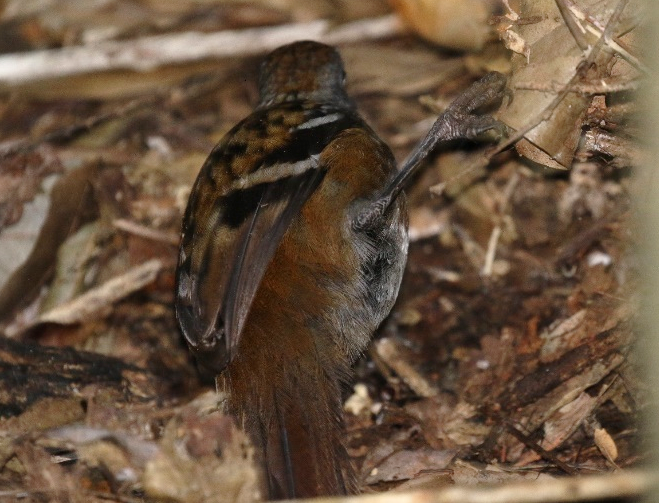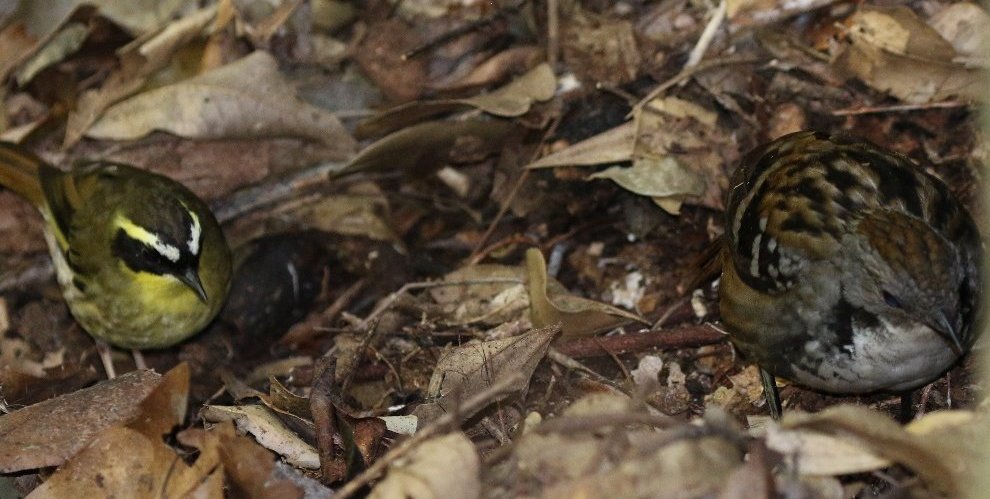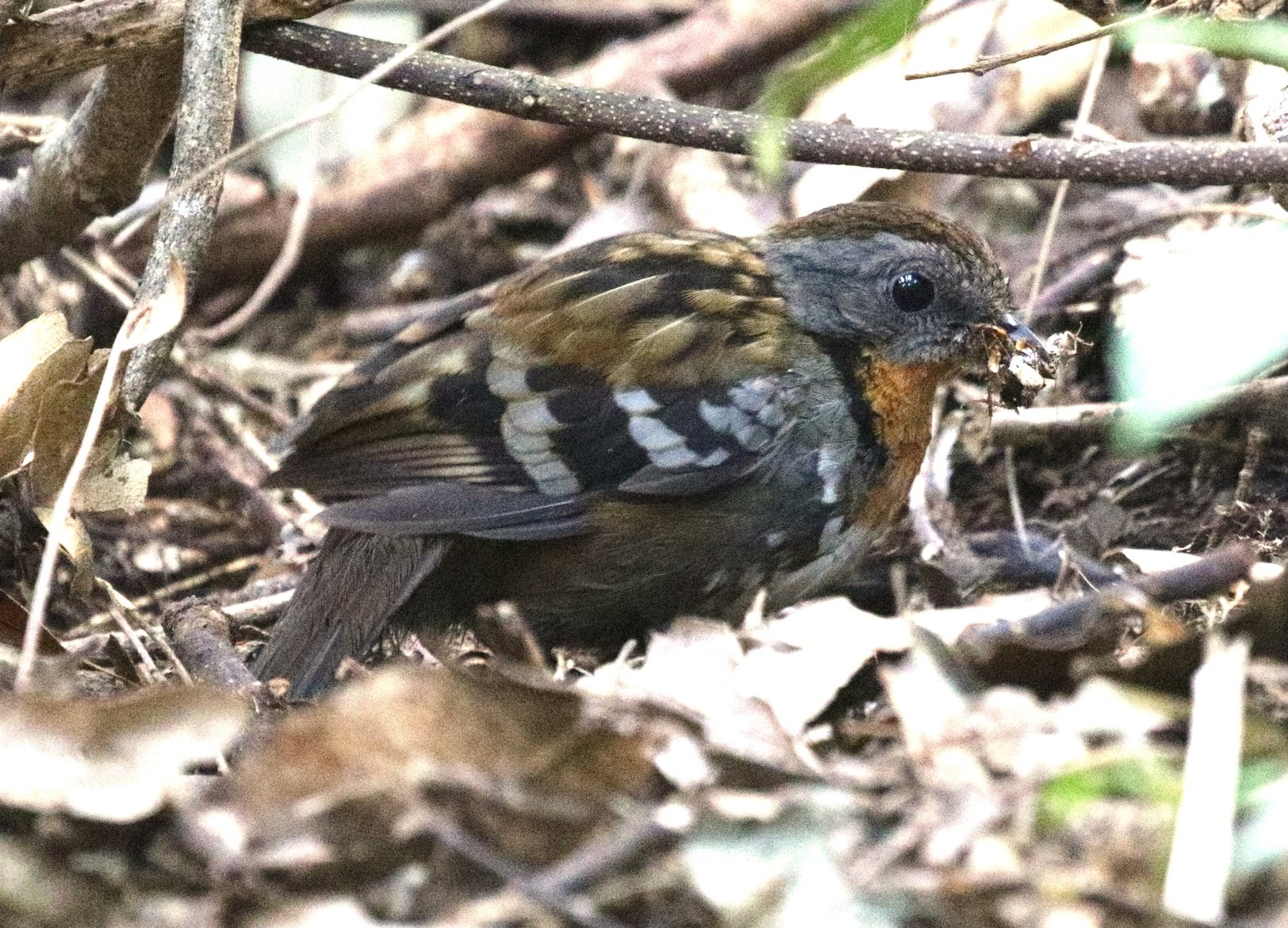Until molecular studies showed that it was genetically quite distinct from its New Guinea look-alike (Papuan Logrunner), the Australian Logrunner was known as the Spine-tailed Logrunner or simply Logrunner. As noted by others, however, the name ‘logrunner’ is inappropriate as the bird does not run, but hops on the ground. On the other hand, the name ‘spine-tailed’ accurately describes the stiffened shafts of the tail feathers that extend beyond the vane, a unique characteristic that is shared with the third member of this ancient family – the Chowchilla of the Wet Tropics in North Queensland.

All three species are confined to dense rainforests, where they forage for small Crustaceans, insects and other invertebrates in the leaf litter by vigorously kicking away dead leaves with each leg alternately, often with such force that the kicking leg reaches above the height of the bird’s body (Fig. 1).

The stiff tail appears to be used as an extra prop to brace the body while digging, when the bird may disappear below the level of the surrounding leaf litter. Other ground-foraging species such as the Yellow-throated Scrubwren (Fig. 2) sometimes follow Logrunners apparently in the hope of snatching some invertebrates unearthed by the latter.

The geographical range of the Australian Logrunner is roughly from Wollongong, NSW, in the south, to Wrattens National Park in the Gympie region. In SE Queensland, Logrunners have been recorded breeding in all months of the year, but the peak in egg-laying occurs from July to September (Noske & Coates 2023). The large, domed nest is built on the rainforest floor and takes about one month to construct. The clutch usually consists of two white eggs, which are incubated only by the female (Fig. 3), who spends about 60% of her time on the nest, sitting for an average of 44 minutes. When she is off the nest, she forages with the male who feeds her at regular intervals. The eggs hatch after 21-25 days, and young chicks are covered in black down, which makes them almost invisible inside the dark nest chamber, but for the large white gape flanges surrounding their mouths. The female broods and feeds the chicks over the 18-19 days of the nestling period, although the male contributes indirectly by providing her food, which she carries to the nestlings (Beruldsen 1974).

At Mary Cairncross Scenic Reserve, Antos (2007) observed a female carry a chick’s faecal sac in her beak about 8 m, dig a small pit in the leaf litter, drop the faecal sac in it, then scratch leaves over it, apparently to conceal the sac. Similarly at Boombana, D’Aguilar NP, a female was repeatedly observed carrying faecal sacs up to 10 m from the nest, dropping them, and raking leaf litter over them (Noske & Coates 2023), presumably as a ploy to avoid attracting potential nest predators.
References
- Antos, M.J. (2007). A snapshot of the nesting behaviour of the Logrunner Orthonyx temminckii in South-eastern Queensland. Australian Field Ornithology 24, 129–131.
- Beruldsen, G.R. (1974). Notes on the breeding behaviour of the Southern Chowchilla. Sunbird 5, 22–24.
- Noske, R.A. & Coates, B.J. (2023). Double-broodedness, burial of faecal sacs and long breeding season in the Australian Logrunner in Southeast Queensland. Australian Field Ornithology 40: 122-129.


